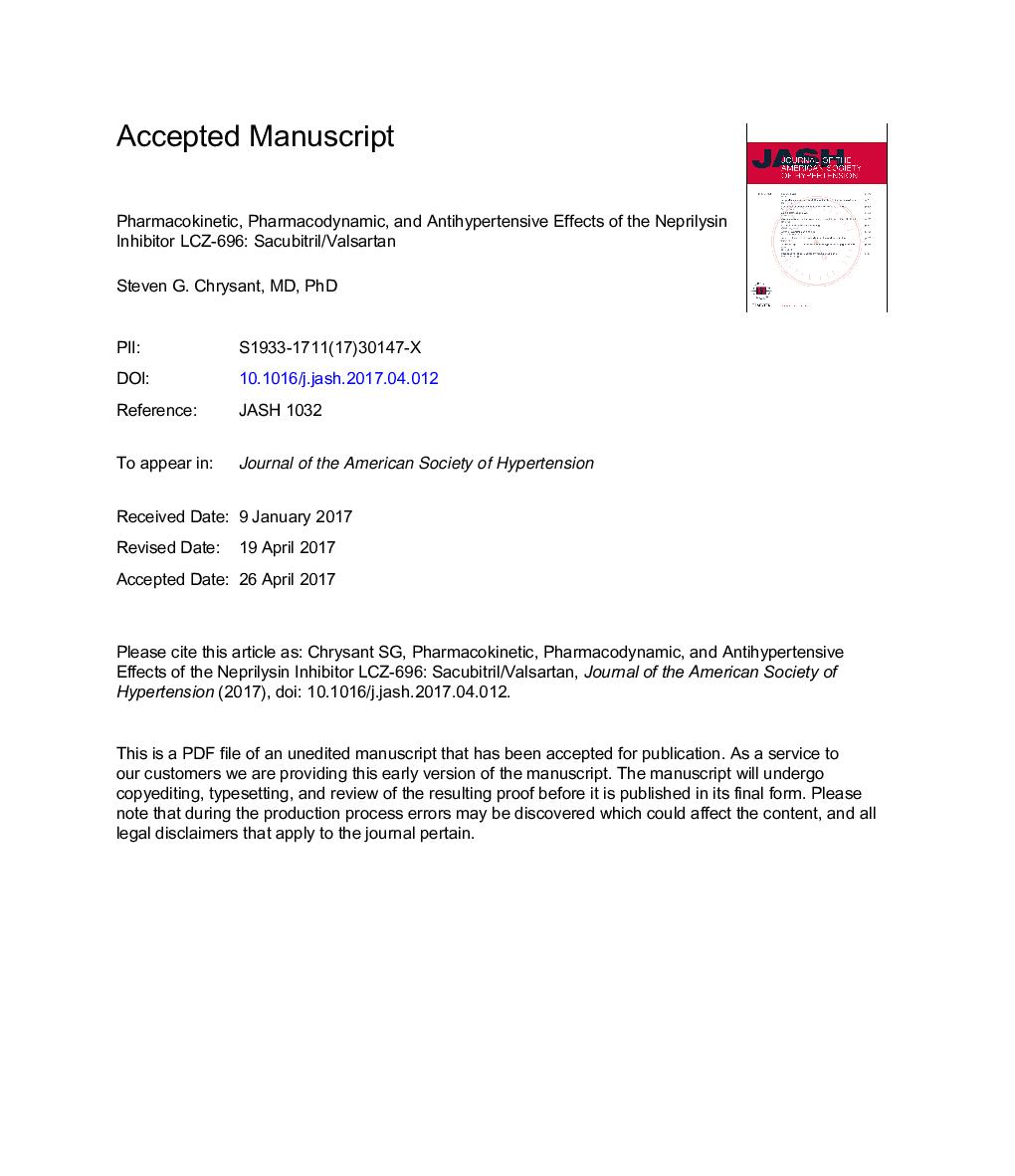| Article ID | Journal | Published Year | Pages | File Type |
|---|---|---|---|---|
| 5613637 | Journal of the American Society of Hypertension | 2017 | 25 Pages |
Abstract
LCZ-696, sacubitril/valsartan, is a dual-acting molecule consisting of the angiotensin II (Ang II) receptor blocker valsartan and the neprilysin (neutral endopeptidase) inhibitor AHU-377 with significant beneficial effects in patients with hypertension and heart failure (HF). Several recent studies have demonstrated a higher effectiveness of LCZ-696 compared to valsartan in the treatment of hypertension and HF. The rationale for the development and the Food and Drug Administration approval of LCZ-696 was based on the concept of an additive effect of the Ang II receptor blocker valsartan and the neutral endopeptidase (neprilysin) inhibitor AHU-377 for the treatment of hypertension and HF. The synergism from these drugs arises from the vasodilating effects of valsartan through its blockade of Ang II type 1 receptor and the action of natriuretic peptides atrial natriuretic peptide and B-type natriuretic peptide (BNP) by preventing their catabolism with neprilysin resulting in increase of cyclic guanosine monophosphate. This action of neprilysin is associated with increased natriuresis, diuresis, and systemic vasodilation, since these peptides have been shown to have potent diuretic, natriuretic, and vasodilating effects. In addition, it reduces the levels of N terminal pro-BNP. Therefore, administration of LCZ-696 results in significant reduction of wall stress from pressure and volume overload of the left ventricle as demonstrated by the reduction of N terminal pro-BNP, both significant constituents of hypertension and HF, and it is safe, well tolerated and is almost free of cough and angioedema.
Keywords
Related Topics
Life Sciences
Neuroscience
Endocrine and Autonomic Systems
Authors
Steven G. MD, PhD,
